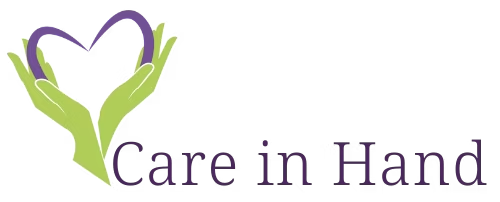🧑⚕️ 1. Immediate response
a. Ensure safety
-
Assess the environment: Remove hazards (e.g., rugs, spillages).
-
Prevent further harm: Stay with the patient, reassure them calmly webapps.stoke.gov.uk+13nhsinform.scot+13extranet.nhsglos.nhs.uk+13rdash.nhs.uk+1dgft.nhs.uk+1.
b. Check for injuries
-
Encourage them to stay still and quietly assess pain.
-
If there’s potential head, neck, spinal, hip, or limb injury—or they are unable to get up—do not move them. Instead, call for help (999 or community falls response) nhs.uk+8gateshead.gov.uk+8dgft.nhs.uk+8.
c. Encourage gradual movement if safe
If there are no injuries and the patient feels capable, assist them in getting up slowly:
-
Roll onto their side.
-
Move to hands and knees.
-
Crawl to a sturdy chair or sofa.
-
Place the strongest foot flat, kneel, use hands to push up.
-
Sit and rest before attempting further movement pmc.ncbi.nlm.nih.gov+8nhsinform.scot+8gateshead.gov.uk+8gateshead.gov.uk.
🧐 2. If the patient cannot get up
-
Call for help immediately—999 in emergencies, or NHS 111 if it’s non-emergency. Some areas have a community-based falls response or fire service assistance for non-injury falls greatermanchester-ca.gov.uk+3staffordshirefire.gov.uk+3england.nhs.uk+3.
-
Keep the patient warm, hydrated, and encourage gentle body movement every ~30 minutes to avoid pressure damage nhs.uk+3gateshead.gov.uk+3rdash.nhs.uk+3.
🚑 3. First aid care
-
Unconscious but breathing: Place in recovery position, monitor until help arrives nhs.uk.
-
Injured patients: Offer basic first aid – pain relief (if authorised), dress wounds, and observe neurological signs (confusion, consciousness, limb weakness) until professionals arrive dgft.nhs.uk.
📄 4. Post‑fall assessments & documentation
-
Conduct a post‑fall assessment (ideally with a nurse or clinician):
-
Review patient history, medications, cognition, vision, balance gov.uk+3pmc.ncbi.nlm.nih.gov+3greatermanchester-ca.gov.uk+3.
-
Note environmental factors (lighting, flooring, footwear).
-
-
Fall incident incident form (e.g., Datix):
-
Document time, location, witness statements, injuries, and actions taken greatermanchester-ca.gov.uk+14dgft.nhs.uk+14gov.uk+14.
-
-
Notify multidisciplinary team (MDT) and, if in hospital, initiate “falls bundle” care plan and inform family/caregivers dgft.nhs.uk.
🛡️ 5. Prevention & safety planning
-
Review medications: Identify high-risk medications (e.g., sedatives, blood pressure drugs) greatermanchester-ca.gov.uk+3pmc.ncbi.nlm.nih.gov+3gateshead.gov.uk+3.
-
Strength & balance exercises: Introduce group or home-based programs (e.g., chair sit-to-stands, Tai Chi) worcestershire.gov.uk+4greatermanchester-ca.gov.uk+4gov.uk+4.
-
Home safety audit:
-
Provide non-slip mats, clear walkways, grab rails, stable footwear.
-
Suggest pendants or personal alarms for lone individuals staffordshirefire.gov.uk+5hertfordshire.gov.uk+5ceredigion.gov.uk+5gateshead.gov.uk.
-
-
Hydration & health monitoring: Keep fluids accessible and monitor for dehydration, dizziness, UTIs .
-
Vision, hearing & cognition: Schedule assessments; identify fear of falling and address with reassurance & confidence-building pmc.ncbi.nlm.nih.gov.
-
Nutrition & bone health: Encourage calcium- and vitamin D-rich diet (or supplements) .
🗓️ 6. Ongoing monitoring & training
-
Repeat risk assessments after any fall, change in condition, or monthly reviews hertfordshire.gov.uk+6extranet.nhsglos.nhs.uk+6rdash.nhs.uk+6.
-
Staff education: Regular training on lifting techniques, post-fall protocols, and falls bundle implementation ceredigion.gov.uk+6dgft.nhs.uk+6greatermanchester-ca.gov.uk+6.
-
Patient/staff engagement: Inform residents and families about fall prevention plans, encourage participation in exercise and safety measures.
✅ Quick-reference checklist
| Step | Action |
|---|---|
| ✅ Safety first | Clear hazards, keep calm |
| ✅ Injury check | Stay still if serious injuries suspected |
| ✅ Help if needed | Dial 999/111 or request community support |
| ✅ Assist carefully | Follow NHS “get-up” guidance |
| ✅ First aid | Provide pain relief, monitor vital signs |
| ✅ Document & escalate | Use formal falls incident reporting |
| ✅ Prevention | Exercise, home safety, review meds |
| ✅ Reassess | Update care plan after fall or change in condition |
✅ Conclusion
By following this systematic approach—from immediate care through to long-term prevention—staff can greatly reduce harm from falls and support the ongoing health and confidence of older patients.
Let me know if you’d like printable posters or training slides to support this guide further!
